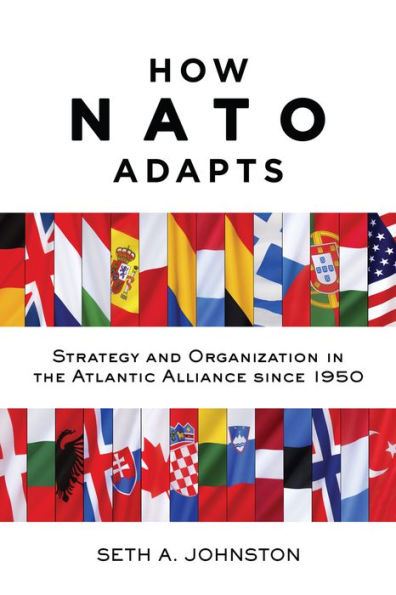Jeffrey A. Larsen
A meticulously researched and in-depth historical study of the NATO Alliance and its responses to inflection points throughout its history. Johnston knows NATO, and he knows how to write. How NATO Adapts is illuminating and educational.
Admiral (ret.) James G. Stavridis
Nothing is more important to NATO than the ability to adapt and adjust its approach— tactically, operationally, and strategically—as circumstances change. How NATO Adapts is an honest and unbiased examination of the successes and challenges of this turbulent twenty-first century for the world's premier security Alliance.
Stanley R. Sloan
A unique analysis of NATO's evolutionary development, How NATO Adapts effectively employs a useful new prism for examining the alliance. Well-organized and well-written, this book should be of great interest to anyone with an academic or professional interest in NATO's history and institutional dynamics.
James G. Stavridis
Nothing is more important to NATO than the ability to adapt and adjust its approach— tactically, operationally, and strategically—as circumstances change. How NATO Adapts is an honest and unbiased examination of the successes and challenges of this turbulent twenty-first century for the world's premier security Alliance.
Giovanni Capoccia
How NATO Adapts offers a theoretically innovative and empirically rich account of why this post–World War II military alliance continues to play an important role in today’s multipolar world. This well-researched book constitutes an excellent addition to the growing scholarly literature that applies historical-institutional theories to the study of international relations.
From the Publisher
Nothing is more important to NATO than the ability to adapt and adjust its approach— tactically, operationally, and strategically—as circumstances change. How NATO Adapts is an honest and unbiased examination of the successes and challenges of this turbulent twenty-first century for the world's premier security Alliance.—Admiral (ret.) James G. Stavridis, former NATO Supreme Allied Commander, current Dean of The Fletcher School, Tufts University
How NATO Adapts offers a theoretically innovative and empirically rich account of why this post–World War II military alliance continues to play an important role in today’s multipolar world. This well-researched book constitutes an excellent addition to the growing scholarly literature that applies historical-institutional theories to the study of international relations.—Giovanni Capoccia, University of Oxford
A unique analysis of NATO's evolutionary development, How NATO Adapts effectively employs a useful new prism for examining the alliance. Well-organized and well-written, this book should be of great interest to anyone with an academic or professional interest in NATO's history and institutional dynamics.—Stanley R. Sloan, Brent Scowcroft Center on International Security, The Atlantic Council, author of Defense of the West: NATO, the European Union and the Transatlantic Bargain
A meticulously researched and in-depth historical study of the NATO Alliance and its responses to inflection points throughout its history. Johnston knows NATO, and he knows how to write. How NATO Adapts is illuminating and educational.—Jeffrey A. Larsen, NATO Defense College, coeditor of On Limited Nuclear War in the 21st Century
Sarwar A. Kashmeri
Johnston provides well-researched insight into the inflection points of NATO's timeline by illuminating personalities, quotations, and political crossroads.



